Harm Reduction Journal volume 22, Article number: 109 (2025) Cite this article
Photovoice, a participatory photography approach, is an action-oriented research methodology that is increasingly being taken up in research with equity-owed populations and related to sensitive topics. This includes scholarship and activism with people who use(d) drugs, for which there are important ethical and pragmatic considerations. Among these is the challenge of drawing attention to substance use-related inequities yet not causing harm in (mis)representing communities, above all when sharing participant-produced photography with wider public audiences, including via photovoice exhibits. In this commentary, we draw from our recent photovoice research with 2S/LGBTQ+ youth who use(d) drugs to recount our process of planning and hosting a community photovoice exhibit, with the aim of highlighting implications for harm reduction-oriented and youth-engaged knowledge mobilization. We begin by introducing our Youth Action Committee, comprised of nine transgender, non-binary, and gender non-conforming youth who use(d) drugs, while briefly tracing our group’s history of collaboration leading up the ‘Queer Eyes, Queer Lives’ photovoice exhibit, with Vancouver's 2024 Queer Arts Festival. Next, we discuss our participatory and intentional approach to planning this community event, including the steps we took to increase accessibility and turnout (e.g., venue selection, strategic partnerships) and make the exhibit youth-friendly and engaging (e.g., hiring a DJ, providing food, enlisting Youth Action Committee members as speakers). We then detail our approach to promoting youth choice in selecting generative and non-harmful photographs for the exhibit, such as by using photo-rating and photo-release processes during study data collection and deliberating with the Youth Action Committee to choose exhibit photographs that could most appropriately and respectfully represent research participant’s multiple lived realities. We couch this practical discussion within a broader conversation about resisting damage- and deficit-focused narratives in substance use research, highlighting our group’s active efforts to shift such narratives by showcasing photography reflecting community resiliencies, strengths, joys, and politicalities. The parts and sum of this commentary provide direction for other activist-scholars seeking to create, share, and mobilize art in substance use research and community intervention, and we end the paper by encouraging others to reinterpret and build on our approach through their own work.
Photovoice, a participatory photography approach, is an action-oriented methodology that aims to democratize research and drive social change [1,2,3]. With photovoice, participants take and discuss photographs to document their lived experiences and the socio-political contexts of these experiences, in ways that are community-driven, accessible, and creative [2, 4]. Photovoice involves a series of procedures that include the identification of the community issue(s) of importance, participant recruitment, study orientation, participant-led photography, discussion of the photography, data analysis, and community advocacy and knowledge mobilization [1, 2]. While approaches to actioning photovoice vary [5], participatory research is considered a best practice with this methodology. Indeed, more participatory photovoice projects have been associated with longstanding relationships between community members and university researchers, an enhanced understanding of community assets and needs, and capacity building [6]. Accordingly, there have been calls for researchers to engage community participants in photovoice projects from start to finish, and to ensure that participants are co-researchers with ownership over the project [5]. The nuances of this community engagement will differ across research contexts, for example depending on the research team’s positionality and whether a study uses individual interviews or focus groups with participatory photograph, yet the results of photovoice should always be presented back to community to elicit feedback prior to broader community dissemination, including via exhibits of the photography [7].
Photovoice has a rich history of being mobilized in research with equity-owed populations and on sensitive topics [1,2,3], including in scholarship and activism with people who use(d) drugs [8,9,10,11]. This work has surfaced important ethical and pragmatic considerations, including the need for photovoice researchers to strike a balance between illuminating conditions of inequity and not representing communities through a ‘damage-centered’ lens [12], or otherwise causing harm [13]. To this point, one study with people who inject drugs in the USA underscored that while photovoice can help community members to depict unique lived experiences and share their stories in a more comfortable way, there can also be concerns related to safety, embarrassment, and sensitivity when using the methodology for research about substance use [9]. Considerations such as these are of particular import for communities grappling with visibility politics in which ‘being seen’ is a political goal amid erasure from the public imaginary [14]. Risks of (mis)representation with photovoice in this context are key to consider when sharing images with wider audiences, including via photovoice exhibits [15]. That said, the photovoice literature details limited examination of how researchers approach this form of knowledge mobilization, nor the ways researchers work to reduce potential harms when preparing such exhibits. Indeed, photovoice-related scholarship with people who use(d) drugs and other equity-owed populations has prioritized attention to data collection and overall study design processes, outlining helpful directions future work in this sphere (e.g., 9,10,13) but providing less in the way of guidance or case examples for exhibiting participant-produced photography.
This commentary draws from recent photovoice research with Two-Spirit, lesbian, gay, bisexual, transgender, and other queer (2S/LGBTQ+) youth who use(d) drugs to showcase our authorship team’s process of planning and hosting a community photovoice exhibit. Our aim in doing so is to highlight implications for harm reduction-oriented and youth-engaged knowledge mobilization. Here, we define ‘youth’ as comprising people between the ages of 15 and 29 years old, and understand ‘harm reduction’ as referring to policies, programs, and practices– including research practices– that aim to minimize drug-related harms [16]. These include harms stemming from (mis)representations of substance use and people who use(d) drugs in research and knowledge mobilization, as can occur with stigmatizing and damage-centered framings [12, 17]. In conceptualizing harm reduction, we also recognize its underlying philosophy and potential as a political movement concerned with advancing equity and social justice [18, 19], and we position our scholarship as a tool for catalyzing change toward the realization of these aims.
We write this commentary as a group of community-based researchers and activists in British Columbia, Canada. Our work together began in September 2022, after co-author CB approached TG about forming a youth action committee (YAC) to guide CB’s master’s thesis research exploring how cannabis use features in the gender experiences of 27 transgender, non-binary, and gender non-conforming (TGNC) youth, aged 15 to 24 years old (mean = 21.1) [20]. We established this group, called ourselves the Substance Use Beyond the Binary YAC (see Fig. 1 for our group logo), and expanded about one year later to also start informing TG’s dissertation study of how substance use and homelessness trajectories intersect for 2S/LGBTQ+ youth, involving 32 youth between the ages of 17 and 29 (mean = 22.6) [21]. While this second study included TGNC youth as part of a broader population of 2S/LGBTQ+ youth (i.e., including cisgender queer youth), we only invited TGNC youth from this study to join the YAC, given the initial focus of our advisory work and our desire to centre TGNC youth experiences. Approval for CB and TG’s photovoice studies was obtained from the University of British Columbia Behavioural Research Ethics Board (#H22-02910; #H21-01203). CB and TG have since completed the studies but continue to co-lead monthly meetings with the group. It is now comprised of nine TGNC youth (currently 18 to 25 years old) with varied lived/living experiences related to queerness, substance use, mental health challenges, homelessness, and unstable housing. Our work together involves advising on many aspects of research but, for reasons of feasibility and group interest, we focus on knowledge exchange and mobilization.
The Substance Use Beyond the Binary Youth Action Committee logo, designed by Apollo Collin-Gray and Sophie McKenzie
By way of additional background, our youth advisory committee work together has been guided by the CollaboraKTion framework for community-based knowledge translation [22]. Developed in the context of youth mental health promotion, this framework provides theory- and evidence-based direction for co-creating and using knowledge to improve population health and wellbeing [22]. Our team adapted and applied key processes from this framework for our work with TNGC and 2S/LGBTQ+ youth who use(d) drugs [21, 22]. Specifically, we: (i) contacted and connected with local youth to establish and strengthen relationships (e.g., study recruitment, outreach, initial YAC formation); (ii) used research to deepen understandings of community issues (e.g., the two photovoice studies); (iii) adapted and applied what we learned to develop a vision for informing action to promote community wellbeing (e.g., development of data-driven and YAC-informed policy and practice recommendations); (iv) engaged and supported community and other stakeholders to facilitate this action (e.g., community photovoice exhibit and other knowledge mobilization initiatives); and (v) embedded knowledge and training with community to foster ongoing change (e.g., continued YAC involvement and capacity building). With this commentary, we contribute to the literature a focused description of our YAC and our knowledge mobilization work together. This is significant because, although the topic of YAC and community engagement is increasingly coming into focus in the health research literature [23,24,25,26,27], it is less well described in the context of photovoice research, particularly with respect to planning photovoice exhibits and forums [2], notwithstanding with some exceptions [28, 29].
The research design and findings from the two photovoice studies scaffolding this commentary are detailed elsewhere [20, 21, 30,31,32], and in a forthcoming publication about photovoice data collection. Harm reduction was a focus in both the substantive issues youth photographed, and in our research team’s process of selecting and later exhibiting their photographs. With respect to the photography content, we briefly note that the two studies included photo-taking prompts that specifically related to harm reduction, yet that also extended beyond this focus. For example, CB’s study prompted youth to take photographs that represented their experiences using cannabis and salient intersections with mental health, gender/sexuality, and self and community care practices, including harm reduction efforts. For TG’s study, youth were instructed, “You might want to think about taking photographs depicting the things you do to maintain your health, reduce potential harms in your life (related to substance use, homelessness, and otherwise), and support your community’s wellbeing.” Importantly, youth in each study were encouraged to take photographs depicting whatever was important to them when it came to their health and wellbeing.
Our YAC has led numerous knowledge mobilization activities together, including conference presentations, academic papers, community and policy briefs, and participation in a podcast about gender-affirming substance use care [33]. Among our most celebrated outputs is the Queer Eyes, Queer Lives community photovoice exhibit (https://queerartsfestival.com/queer-eyes-queer-lives/). Through this exhibit (see Fig. 2 for our promotional poster), we brought together a collection of photographs that featured and affirmed the complexities, tensions, and possibilities of substance use among 2S/LGBTQ+ youth, in a community-tailored and low-barrier event space. We decided to host a singular exhibit showcasing photographs from both CB and TG’s thesis and dissertation studies, in part because it was more feasible and pragmatic to coordinate our time and resources– including limited funding– to plan a high-quality and impactful event. This meant that photographs from TGNC youth and 2S/LGBTQ+ youth more widely were presented together. While these communities overlap (indeed, one third of the youth in TG’s study were transgender or gender-questioning), our YAC recognized that we would be exhibiting photographs from diverse youth, with similar and dissimilar experiences. We saw this as an opportunity, not a limitation, particularly as we wanted to showcase the intersectionality of 2S/LGBTQ+ young peoples’ lives, whilst shining a spotlight on the distinct experiences of TGNC youth, including by prioritizing the perspectives of our YAC in the lead-up to the exhibit.
Queer Eyes, Queer Lives exhibit promotional poster, with photography by “Star.” Poster by Mark Takeshi McGregor
We began planning the exhibit toward the end of data collection for the above-mentioned studies, about one year out, allowing time to meaningfully and intentionally collaborate in producing an impactful community outreach event. To this end, and in line with the demand “nothing about us without us” from disability rights activists [34] and youth harm reduction advocates [35], the YAC took a leadership role throughout all phases of preparing and hosting the exhibit. One of our earliest tasks was to select the venue, for which we first elicited suggestions from the YAC then shortlisted these based on logistics (e.g., space, cost, availability, transit accessibility), ahead of canvassing the venues and making a final decision as a group. We decided on the SUM Gallery (https://sumgallery.ca/) in Vancouver’s Chinatown and Downtown Eastside neighbourhood, as it not only met our logistical needs but is a queer-run venue with a reputation for featuring social justice-oriented art. An added draw was the level of interest and support from the SUM Gallery staff, who offered to include our exhibit in their month-long programming for Vancouver’s 2024 Queer Arts Festival. We saw this as an opportunity to further build community with local 2S/LGBTQ+ people and allies, who represent and are an extension of our YAC and the populations included in our research studies.
After securing a venue, we took several additional measures to make our exhibit youth-friendly and engaging. For example, we booked a DJ (https://djoshow.com/about/) who played music during our opening night and, as a member of the Squamish Nation, generously provided an acknowledgment and welcome to the Coast Salish territories on which we were gathered. For this opening night, we also secured food and drinks (non-alcoholic, keeping in mind youth and other attendees who are pursuing recovery), printed take-away postcards of representative study photographs (Fig. 3), and made space for YAC members– including co-author AC-G– to offer some remarks about the exhibit and the research and lived experiences behind it. Our exhibit premiere was well attended and, about one week later, we held a ‘Meet the Artists’ panel to facilitate additional dialogue between our YAC and the broader community. We have continued to hold monthly YAC meetings since this event, and our meetings have focused on preparing a forthcoming photo booklet that will include photography from the exhibit as well as participant quotations and more context about the two studies. These meetings have also allowed opportunity for the group to celebrate the exhibit success and deliberate on our work leading up to it, with these reflections forming the basis of this commentary.
Queer Eyes, Queer Lives exhibit take-away postcards, underneath three larger exhibit photographs. Photo by Chris Randle
Deciding how to best spotlight our research and mitigate harms of (mis)representation was a key consideration in preparing and presenting this photovoice exhibit. We opted to only feature the photography data, omitting accompanying titles and quotations for this initiative (note, however, that we did analyze the art and interview data together for the study publications). Our aim with the exhibit was to centre attention on the photographs and allow them to ‘speak for themselves,’ while opening opportunities for attendees to connect with the art in their own ways (Fig. 4). Given this, we emphasized in our exhibit statement and overall knowledge mobilization that the photographs represented only one dimension of participants’ stories, adding that the artists often associated a deeper meaning or lived experience to their photography. Due to the somewhat decontextualized presentation of the exhibit, we were very intentional about the photographs we selected and omitted. We took care to not showcase photographs that– in the absence of sufficient background (e.g., participant quotations, contextual analysis)– could depict the research participants and their communities in negative light. We were reasonably well set up to make these assessments, as CB and TG had used a photo-release form and photo-rating process during data collection with the study participants [20, 21], prompting them to determine whether and how their photographs could be shared in the exhibit. Thus, from an early point in the work, we promoted youth choice in selecting photographs that appropriately and respectfully reflected their multiple lived realities [15], and that youth judged to not be exploitative or intrusive [8].
Queer Eyes, Queer Lives exhibit attendees engage with photographs representing substance use and its social context among 2S/LGBTQ+ youth. Photo by Chris Randle
We did not have capacity to display all approved photographs at the exhibit, as there were over 500 between the two studies. Therefore, CB and TG narrowed down the pool of photographs to those we felt were most representative of the research and the ‘essence’ of participants’ lived experiences. After bringing a subset of non-identifying photographs to the YAC, we decided on the final 60 exhibit photographs through collective dialogue and consensus-based decision-making. We also decided together on how best to organize exhibit photography, categorizing the photographs by desired size and theme. This process was quite organic and conversational, though we also used structured voting techniques for some photographs, including those we used for our exhibit promotional poster and the take-away postcards.
We purposefully exhibited photographs reflecting the resiliencies, strengths, joys, and politicalities of 2S/LGBTQ+ youth who use(d) drugs, and how these qualities can exist and flourish despite challenging life circumstances and societal inequities. Our motivation for doing so follows our YAC’s narcofeminist and queer worldbuilding orientation [36,37,38,39]. Narcofeminist thinking calls for a shift beyond approaching drugs (and drug users) as a problem subject to consider how substance use can function as a resistive and generative practice [36, 37]. Somewhat relatedly, a queer worldbuilding orientation values attention to autonomy and agency in 2S/LGBTQ+ people’s individual and collective capacities to envision ourselves in the world, both present and future, while refusing to submit to deficit-focused narratives of our communities’ existence [38, 39]. Drawing on these perspectives, we deliberately showcased photographs depicting the complexities, tensions, and possibilities of what drugs can do for TGNC and 2S/LGBTQ+ youth in shaping selves and social worlds. We also included photographs capturing a spectrum of more ‘mundane’ or everyday moments in the lives of these 2S/LGBTQ+ youth, including the subtle ways in which substance use shaped, and was shaped by, their connection with nature (Fig. 5) and sense of place in the city (Fig. 6). Less in focus here and with the overall photographic collection was community pain and suffering. Indeed, we emphasized strengths-based photographs in favour of those we assessed as being more damage- and deficit-centred [12], which require more care and context to introduce and therefore may be better suited to other knowledge mobilization outlets. This approach enabled us to tune into the strengths and resiliencies of our communities, in line with an emerging movement to mobilize Two-Spirit, queer, and trans joy and resistance [40,41,42].
In regular YAC meetings since the photovoice exhibit, our team has had in-depth discussion surrounding our knowledge mobilization work and its perceived impacts. We are proud to have championed a youth-led photovoice exhibit that was foundationally guided by harm reduction aims [18, 19], including as we took measures to reduce harms of (mis)representation in research and mobilize the grassroots political acumen of local TGNC and 2S/LGBTQ+ youth who use(d) drugs. We did not formally evaluate the outcomes or impacts of these activities, however, and this represents an important limitation to our collective work and the overall photovoice literature [4, 5]. To further advance the methodology and its use with people who use(d) drugs, researchers should endeavour to delineate the specific ways they approach photovoice while detailing anticipated and actual outcomes and impacts in connection to harm reduction, capacity building, policy/practice change, and other community-identified priorities.
In sum, we actioned harm reduction in community-based photovoice research and knowledge mobilization with TGNC and 2S/LGBTQ+ youth who use(d) drugs. Our group collaborated and prioritized youth input to execute a photovoice exhibit that we felt was productive for catalyzing social justice change, on multiple fronts. In reflecting on this work, we have attempted to showcase young people’s radical potential in achieving research impact and mitigating community misrepresentation and exploitation. That said, our approach is but one way of doing community-engaged photovoice research, and we recognize that approaches ought to vary by context and in accordance with local community needs and desires. To this end, we conclude by encouraging other activist-scholars to reinterpret and build on our approach through their own efforts to create, share, and mobilize art in substance use research and community intervention.
The datasets analyzed for the current studies are not publicly available due to them containing sensitive information that could compromise research participant privacy and consent.
- 2S/LGBTQ+:
-
Two-Spirit, lesbian, gay, bisexual, transgender, queer, and other sexual and gender minority
- TGNC:
-
Transgender, non-binary, and gender non-conforming
- YAC:
-
Youth action committee
We offer immense gratitude to young people who make our research and knowledge mobilization possible and meaningful, including the study participants who shared their time, stories, and photography. We thank Rosario, Toby, and Charlie for their contributions to the photovoice exhibit and this commentary. We also thank DJ O Show and the Vancouver Queer Arts Festival and SUM Gallery team– especially Mark Takeshi McGregor, Ben Siegl, and Tabitha McIntyre– for contributing to this community photovoice exhibit. We also thank community partners who supported this work, including staff at Covenant House, Directions Youth Services, Foundry, and Urban Native Youth Association. Finally, we thank the many university researcher colleagues who supported this exhibit and associated studies, including Emily Jenkins, Rod Knight, Danya Fast, John Oliffe, Hannah Kia, Mark Gilbert, Olivier Ferlatte, Sophie McKenzie, Cathy Chabot, Cameron Eekhoudt, and Koharu Loulou Chayama.
We acknowledge with gratitude our funders. Trainee and project funding was provided by University British Columbia, the Canadian Institutes of Health Research (PCS-183501, PJT-175082, FBD-175894, CTW-155550), and the Canadian Nurses Foundation. In-kind support for the community photovoice exhibit was provided by Vancouver’s Queer Arts Festival and SUM Gallery.
Ethics approval for this study was obtained from the University of British Columbia Behavioural Research Ethics Board (#H22-02910; #H21-01203). Participants provided informed consent.
Not applicable.
The authors declare no competing interests.
Springer Nature remains neutral with regard to jurisdictional claims in published maps and institutional affiliations.
Open Access This article is licensed under a Creative Commons Attribution-NonCommercial-NoDerivatives 4.0 International License, which permits any non-commercial use, sharing, distribution and reproduction in any medium or format, as long as you give appropriate credit to the original author(s) and the source, provide a link to the Creative Commons licence, and indicate if you modified the licensed material. You do not have permission under this licence to share adapted material derived from this article or parts of it. The images or other third party material in this article are included in the article’s Creative Commons licence, unless indicated otherwise in a credit line to the material. If material is not included in the article’s Creative Commons licence and your intended use is not permitted by statutory regulation or exceeds the permitted use, you will need to obtain permission directly from the copyright holder. To view a copy of this licence, visit http://creativecommons.org/licenses/by-nc-nd/4.0/.
Cite this article
Goodyear, T., Barborini, C., Gilmore, R. et al. Harm reduction in photovoice knowledge mobilization with 2S/LGBTQ+ youth who use(d) drugs: A community showcase. Harm Reduct J 22, 109 (2025). https://doi.org/10.1186/s12954-025-01263-3
Received:
Accepted:
Published:
DOI: https://doi.org/10.1186/s12954-025-01263-3
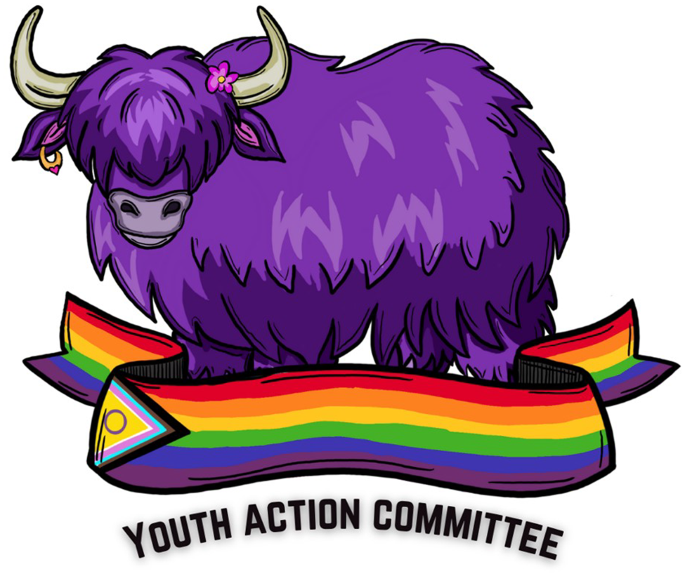
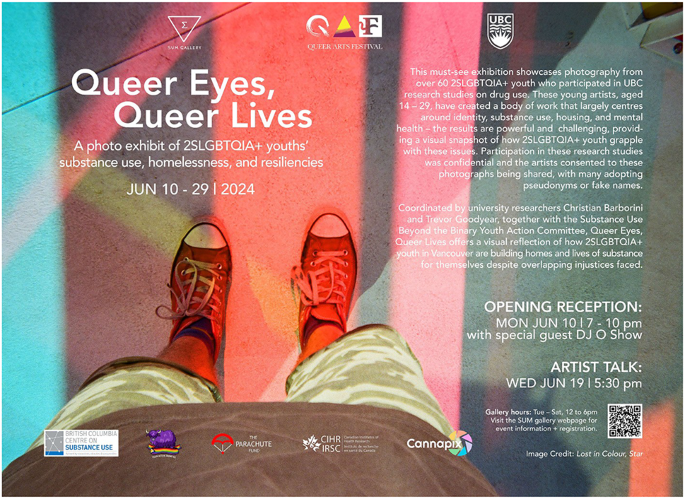
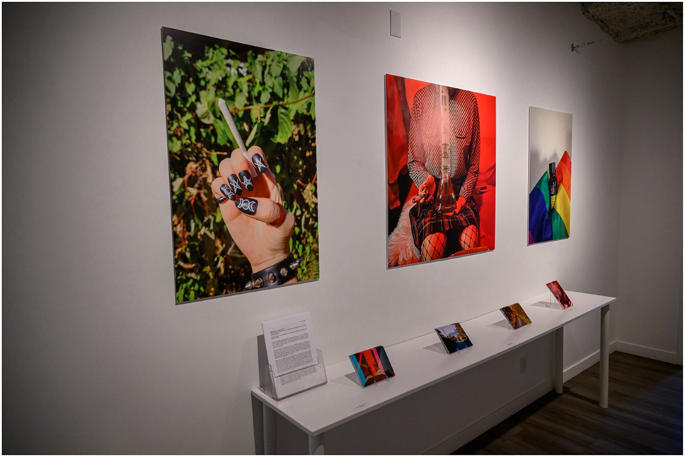
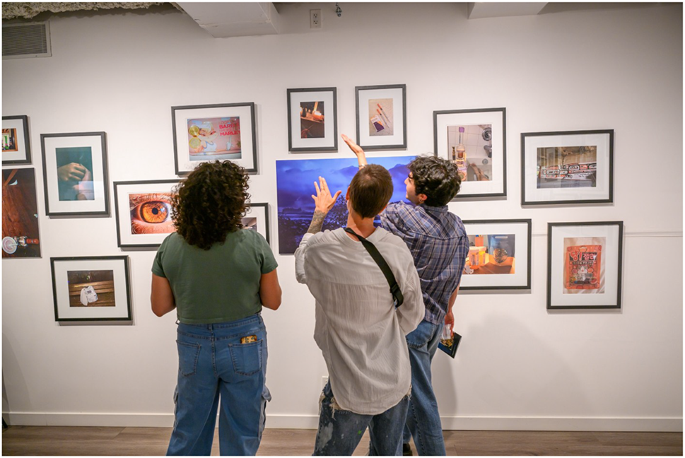
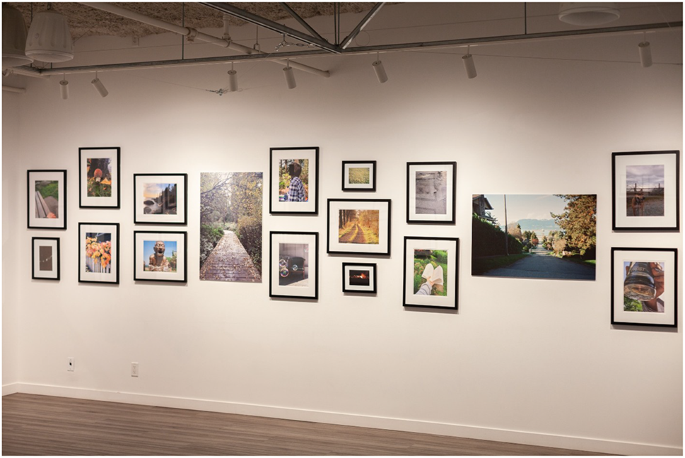
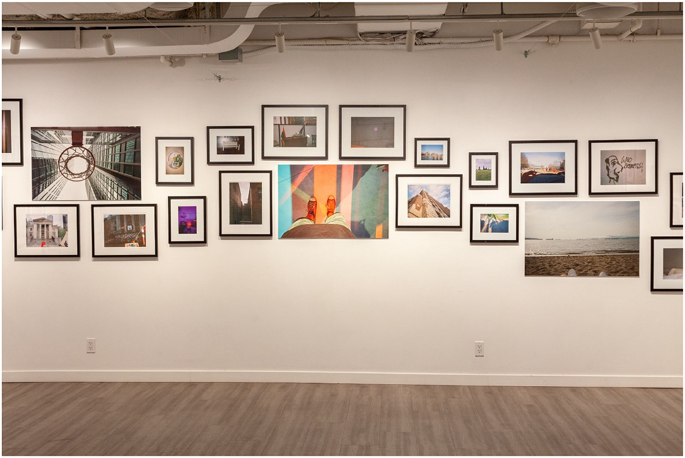








:max_bytes(150000):strip_icc()/grocery-shopping-GettyImages-1161650232-056facce39294b66b09b724ee69fe020.jpg)




